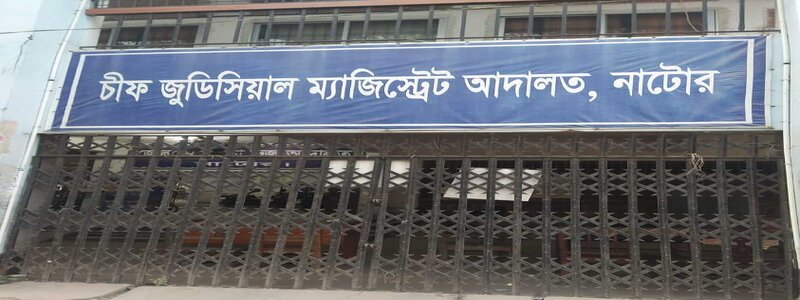Home About Us History of District Judiciary
Adjacent to Barendra Bhumi, rich in ancient heritage and archeology, Natore district is a shining light in the history of India as well as in poet's poetry. 'Natore' is the word that springs to mind as soon as the name of Jibanananda Das's Banalata Sen or Rasnavilas' raw golla is uttered. A chapter of our rich heritage is connected with this modern city. Natore became one of the centers of power in Bengal from the end of Mughal rule. Especially during the Nawabi era, it was widespread. Under the direct supervision of Subedar Murshidkuli Khan (reign: 1701-1727) of Bengal, Barendri Brahmin Raghunandan established a zamindari in the region in the name of his younger brother Ramjivan. In 1710, King Ramjivan Roy built his capital by filling the soil at this place. Over time, it became a well-decorated city with temples, palaces, lakes, gardens and beautiful buildings. The kingdom of Natore reached its peak of prosperity during the reign of Rani Bhavani, wife of Ramakanta, the adopted son of King Ramajivan. When Subedar Murshid Quli Khan divided Bengal into 13 chaklas for the convenience of governance, Rani Bhavani's zamindari was spread over 8 chaklas. In the long 165 years i.e. fourteen years of British, Pakistan and Bangladesh administrative history, Nato was known as Mohkuma Sadar. Rani Bhavani was pleased with her Naib Dayaram and gifted him Dighapatia Pargana. Located in this Dighapatia is the most vibrant architectural feat of Natore district 'Uttara Ganabhavan'. During the reign of Dayaram's later descendant, King Pramadnath, it was elevated to a royal palace following Greek architecture. Over time, this royal palace was first transformed into the Governor's House, then after the advent of Bangladesh, Uttara Ganabhaban. In 1984, Natore became the district headquarters.
With its elevation to the district headquarters in 1984, while Natore's positional value increased on the one hand, its administrative structure as a district became stronger on the other. The Court of District and Sessions Judge, Natore was created vide Memorandum No. S.R.O.380-L/84/546-JIV/5C-1/84 issued on 6th August, 1984. On September 1, 1984, Mr. Md. Hamidul Haque took charge as the first District and Sessions Judge. Subsequently, 16 judges have graced this post as Guardians of the NATO Judiciary over the course of time. Currently, as the Honorable Senior District and Sessions Judge, Honorable Judge, Mr. Sk. Md. Nasirul Haque is enhancing the glory of this important post in the district..
On November 1, 2007, the process of separating the judiciary from the executive began as a result of the landmark judgment of the Appellate Division of the Supreme Court in the case of Masdar Hossain v. Government of Bangladesh. In that context, Civil Appeal 79/1999, Contempt Petition No. 7/2004 by the Appellate Division of the Hon'ble Supreme Court by the notification issued under Memorandum No. 451 dated 13-09-2007 AD from the Judicial Branch-4 of the Ministry of Law, Justice and Parliamentary Affairs of the Government of the People's Republic of Bangladesh. In order to implement the order given on May 4, 2007, 64 Chief Judicial Magistrate Courts were created in the then 64 districts including Natore. On November 25, 2007, Mr. Mohammad Sharif Uddin first assumed this position. At present the Honorable Judge, Mr. Md. Al-Amin is very efficiently serving as the sixth Chief Judicial Magistrate.
Consisting of seven upazilas of Natore Sadar, Singra, Gurdaspur, Baraigram, Lalpur, Bagatipara and Naldanga, this district has separate senior assistant/assistant judge courts for each upazila, but the recently created Naldanga upazila is still under the jurisdiction of Sadar Senior Assistant Judge Court. There is also one Family Court, two Joint District and Sessions Judge Courts, three Additional District and Sessions Judge Courts and one District and Sessions Judge Court. The Chief Judicial Magistrate Court consists of 4 Judicial Magistrate Courts, 3 Senior Judicial Magistrate Courts, an Additional Chief Judicial Magistrate Court and a Chief Judicial Magistrate Court besides 7 Administrative Courts. Special tribunals include a Women and Child Abuse Prevention Tribunal. Courts are always active in maintaining the standard of justice in Natore district.



.jpg)